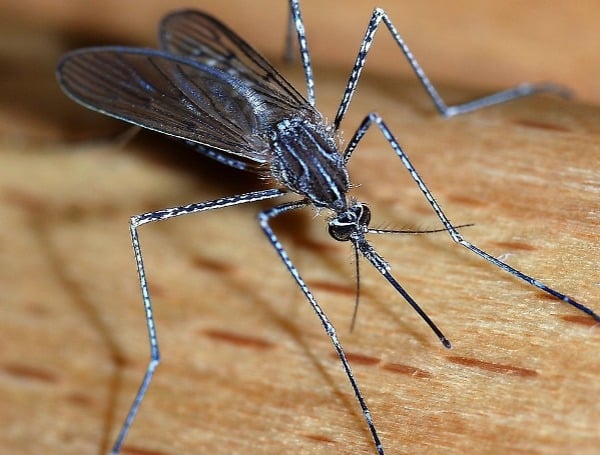Researchers from the UF/IFAS Florida Medical Entomology Laboratory (FMEL) and the Florida Museum of Natural History are working to revolutionize mosquito control by using artificial intelligence to improve the precision of mosquito control. Their research aims to make it easier to apply larvicide effectively but in targeted areas, meaning less larvicide gets used where it isn’t needed, benefitting mosquito control programs through cost-savings and environmental protection.
Assistant Professor Lindsay Campbell of FMEL and Professor Robert Guralnick, the Curator of Biodiversity Informatics at the Florida Museum of Natural History, are researching the development of precision larvicide applications, using AI and advanced geospatial technologies such as LiDAR as a new tool to help target mosquito breeding areas with more accuracy than current methods, Campbell said.
READ: Florida Residents Urged To Take Precautions As Mosquito-Borne Illness Cases Rise
“Precision larvicide application is about combining knowledge from mosquito control programs about high-producing larval habitats with geospatial technologies and AI to pinpoint areas where larvicides can be applied more effectively,” Campbell said. “By doing so, we can help reduce costs for mosquito control programs, slow the development of insecticide resistance and minimize environmental impact.”
The project uses AI to model mosquito larval distributions and predict optimal locations for larvicide applications.
“Recent advances in AI allow us to create models that are adept at filtering out noise and outliers, making them highly effective in predicting mosquito habitats,” Guralnick said. “These models can reveal complex relationships between preferred larval habitat and environmental factors that were previously difficult to detect.”
READ: Beating Mosquitos In Florida: A Comprehensive Guide To Mosquito Control
A key part of the research involves inputting hydrological data derived from LiDAR into the AI models to get detailed insights into how water collects on Florida’s coasts. The goal of using this information in the model is to predict with high accuracy where mosquito breeding sites are located.
Their plan is to create a dashboard for mosquito control programs to be able to access detailed hydrological data in their areas and to use model outputs as a tool to help plan their future mosquito control applications, she said. A $55,000 grant from the Florida Department of Agriculture and Consumer Services (FDACS) is supporting the creation of the dashboard to make the valuable data accessible.
“Our goal is to provide an accessible tool that improves decision-making for mosquito control,” Campbell said. “By predicting areas with higher larval production, mosquito control programs can use this information to apply larvicides more strategically, which will help to protect sensitive environments like mangroves while reducing costs to programs.”
READ: Hillsborough Mosquito Management Hosting Mosquitofish Giveaway, Science Fair Saturday
Guralnick said the project is not only about saving mosquito control districts tax-payer funding, but it’s about protecting Florida’s essential environmental resources.
“This research not only helps us make better decisions about where to apply larvicides but also protects the vital ecosystem functions of our coastal areas,” he said. “It’s about giving state officials and control programs the tools they need to do their jobs effectively while safeguarding the environment.”
This interdisciplinary collaboration between UF/IFAS and the Florida Museum underscores the importance of combining expertise from various fields to advance scientific research and address pressing public health challenges, like mosquito control.
Please make a small donation to the Tampa Free Press to help sustain independent journalism. Your contribution enables us to continue delivering high-quality, local, and national news coverage.
Android Users: Download our free app to stay up-to-date on the latest news.
Connect with us: Follow the Tampa Free Press on Facebook and Twitter for breaking news and updates.
Sign up: Subscribe to our free newsletter for a curated selection of top stories delivered straight to your inbox.

